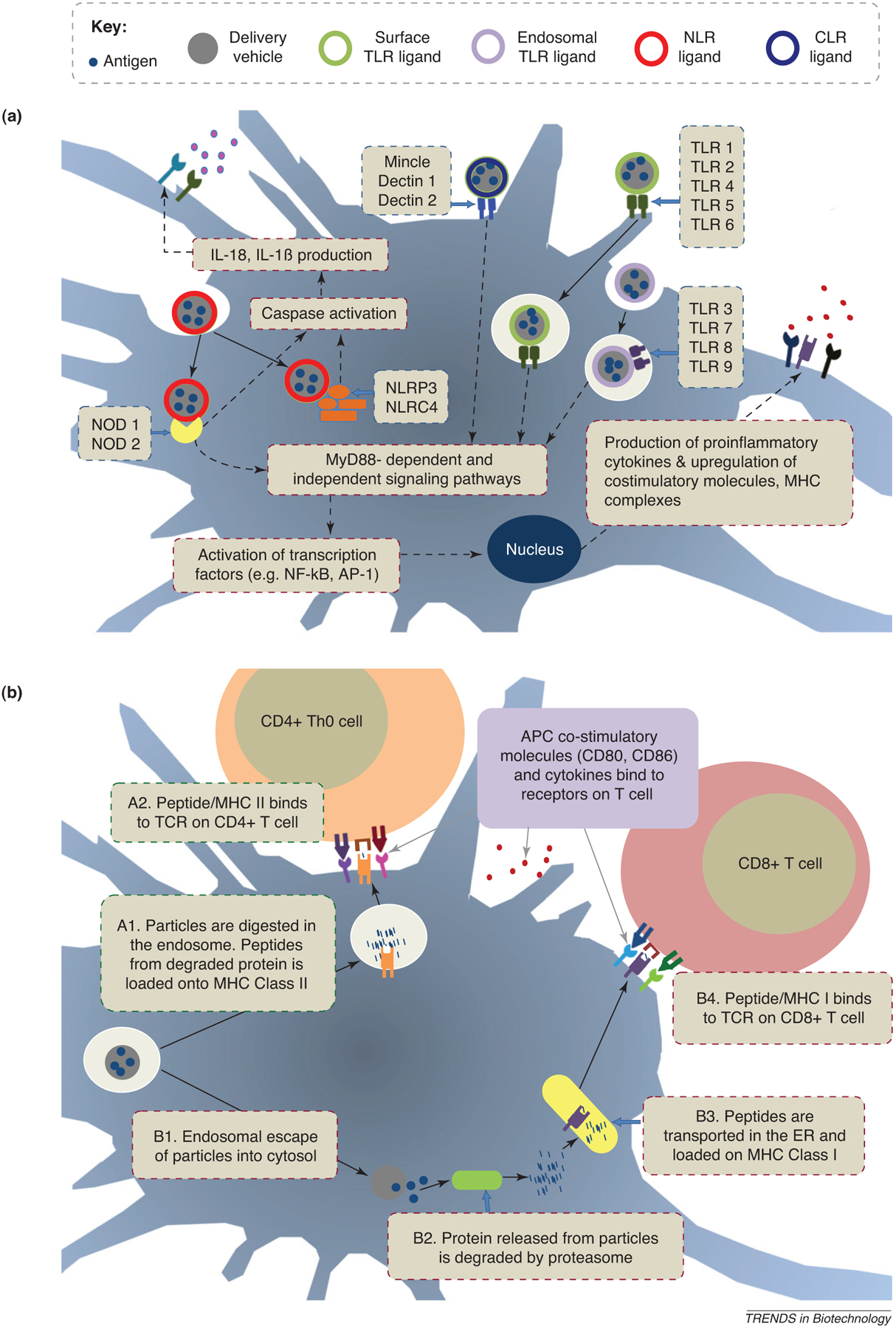Figure 1.

Particles with ligands that target TLRs, NLRs, or CLRs. (a) Signaling. Nano- or microparticles encapsulate antigenic components or incorporate agonists for surface or endosomal TLRs, intracellular NLRs, or membrane-bound CLRs. Particle components promote the production of proinflammatory cytokines and often the expression of co-stimulatory molecules and MHC complexes, thus leading to increased vaccine efficacy. (b) Antigen presentation. Once endocytosed, particles might be degraded in the endosome and access the MHC class II pathway, thereby activating CD4+ T cells (Pathway A). Alternatively, particles might escape the endosome so that encapsulated antigen can be processed in the cytosolic space and be presented via MHC class I to CD8+ T cells (Pathway B).
